The federal Conservatives called for the government to authorize emergency use of the poison strychnine against infestations of gophers.
Tag Archives pests
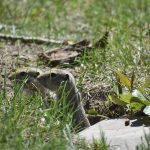
Conservatives call for approval of emergency strychnine use
Poison used for pest populations of gophers was phased out over the first half of the 2020s.
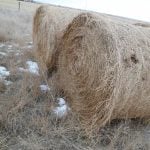
Alberta marks 75 years of rat-free status
The province’s Rat Control Program has helped make it one of the few rat-free zones in the world
Alberta is one of the few places left in the world who can claim being rat free, saving farmers from the invasive pest through the Rat Control Program.

Nutrien purchases bio-control
WINNIPEG — Photodynamic inactivation is not a phrase used in everyday conversation, but it could become an effective control of insect and fungal pests in agriculture. “Photodynamic Inactivation (PDI) of micro-organisms using natural photosensitizers has shown itself to be a powerful tool to combat bacteria and fungi (in crops),” says a 2019 paper published on […] Read more

Native insect acquires new taste for soybeans
The soybean tentiform leafminer has been seen in Manitoba creating leaf injuries on the lower and upper surface
A tiny North American moth species that has been seen in Canada has been developing a new appetite for soybean plants on the U.S. Plains. The species, Macrosaccus morrisella — now officially named the soybean tentiform leafminer — was detected feeding on soybean crops in eastern Minnesota in 2021 and has since taken its newfound […] Read more
Warm December delighted grain beetles; farmers not so much
CALGARY — Unusually warm weather that lasted into early January prompted a Saskatchewan farmer to warn producers about hot spots and insects in grain bins. “I’m hearing that more and more farmers are finding bugs,” said Michael Reimer, who primarily grows durum wheat near Eston, Sask. “I mean, a year ago, we were at minus […] Read more

Sask. may deregulate pests
REGINA — The Saskatchewan agriculture ministry is reviewing several pests for possible deregulation, including clubroot, grasshoppers and Richardson’s ground squirrels. Changes could be in place by spring 2024. SaskCanola requested changes a year ago to how clubroot is treated. The organization asked for clubroot to be removed from the Pest Control Act where it had […] Read more
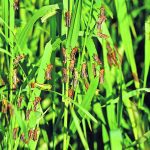
Grasshoppers out early
Farmers are urged to make sure they are dealing with a pest variety of hopper before they decide to spray.
“The good news is if you have millions you don’t have to know (which species),” said Dan Johnson from the University of Lethbridge. “If you have millions, they are definitely pests. None of the naturally occurring ones out on the rangeland that feed birds and participate in the ecosystem ever form millions.”

Gopher control enters the post-strychnine era
Product $/acre
James Tansey, Saskatchewan’s insect and vertebrate pest management specialist, said all the registered products in the study worked, but based on the data, he recommended those containing zinc phosphide.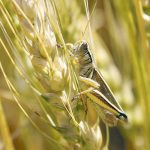
Once-a-year grasshopper forecasts have limitations
Grasshopper specialist says limiting survey to once a year is like conducting a deer population survey only before mating season
Alberta’s 2023 grasshopper forecast predicts areas around Lethbridge will see large populations, while north-central areas will be less affected by the pest. The forecast is based on adult population numbers collected across the province in August 2022. The Peace region is expected to see moderately high numbers in pockets, while the north-central region overall is […] Read more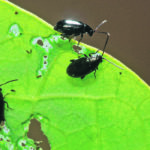
Insects were not a big deal in Alta. this year
Flea beetles were most significant problem in the province, and cabbage seedpod weevils also made themselves known
This year will be remembered for many things, but a plague of insects isn’t one of them. “It wasn’t an insect year,” entomologist and assistant University of Alberta professor Boyd Mori said about 2020’s insect pressures in Alberta. Flea beetle was the most troublesome pest. Both the striped and crucifer species were found in vast […] Read more


